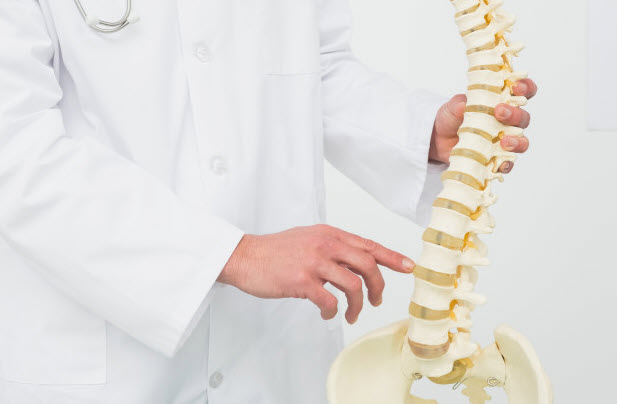A condition that affects the lower vertebrae of the back, spondylolisthesis is a common culprit of lower back pain. It is a spinal disorder in which a vertebra moves forward onto the bone directly below it. The good news is that this painful condition is usually treatable. Accurate diagnosis and correct treatment guided by a physician such as NYC spine surgeon Dr. Charla Fischer is the best way to recover completely from spondylolisthesis.
Symptoms
Mild cases of spondylolisthesis may not cause any noticeable symptoms, while more severe cases can render patients unable to perform their normal activities. Some of the most common symptoms that appear with spondylolisthesis include ongoing lower back pain or tenderness, back and leg stiffness, thigh pain, or tight muscles in the hamstring or buttocks.
Causes
Dr. Fischer finds that the causes of spondylolisthesis are tied to the age, lifestyle, and genetic history of patients. Children may develop this condition from an injury or birth defect, while rapid growth during the teen years can cause spondylolisthesis to occur. Patients of any age may be diagnosed with spondylolisthesis if there is a family history of the disease. Sports known to stress the low back or involve overstretching may also contribute to this condition, such as football, weightlifting, gymnastics, and track and field. There is a similar condition called spondylolysis that means a vertebra has fractured but not fallen onto a lower vertebra; if the bone slips to the next one, the diagnosis changes to spondylolisthesis.
Diagnosis
The first step in diagnosis is scheduling a consultation with a qualified physician like Dr. Fischer at one of her New York offices. A physical examination will include things like raising your legs straight outward, which is a sign of spondylolisthesis. X-rays will be taken of the lower back to get a good look at the vertebrae positions and check for fractures. Other tests such as a CT scan may also be recommended if there is concern a vertebrae is pressing on any nerves.
Treatment
The severity of the case of spondylolisthesis determines the best treatment for the condition. The first course of action is nonsurgical treatments to alleviate pain and promote bone movement back into the correct location. These methods may include taking over-the-counter or prescription anti-inflammatory medications, performing physical therapy, wearing a back brace, or receiving epidural steroid injections. During the healing process, the patient should not participate in any contact sports or other high-risk activities. If nonsurgical methods aren’t successful, Dr. Fischer may recommend surgery for spondylolisthesis. The type of surgery is often spinal fusion, which has a high success rate but is also a more difficult process and lengthier recovery. It may be possible to avoid surgery if you see Dr. Fischer soon after experiencing lower back symptoms and obtain early treatment for spondylolisthesis. Schedule an appointment right away if you suspect you might have this condition.

